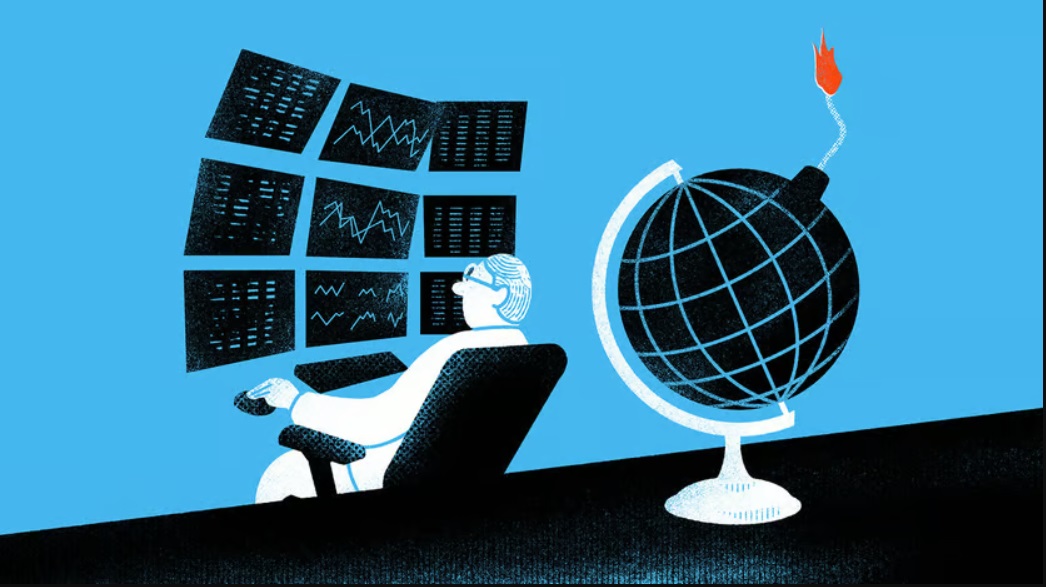image: satoshi kambayashi
Historical lessons often remind us that global conflicts can catch financial markets off guard. As an example, when reflecting on the outbreak of the First World War in 1914, it becomes evident that investors were unprepared for the impending catastrophe. Up until the week preceding the war, bond prices, currency markets, and money markets remained relatively stable. Then, as hostilities erupted, the financial world was thrown into disarray. “The City has seen in a flash the meaning of war,” The Economist noted on August 1st, 1914.
Is it possible that financial markets are currently underestimating the risks associated with a global conflict? In a nightmarish scenario, the descent into a third world war might have begun two years ago as Russian troops amassed near the Ukrainian border. Presently, Israel’s battle against Hamas possesses the unsettling potential to spill beyond its borders. American military support plays a crucial role in the Ukraine-Israel situation, while in Iraq and Syria, U.S. bases have come under attack, likely by proxies of Iran. If China were to seize the opportunity to invade Taiwan, America could find itself drawn into three simultaneous conflicts. The risk exists that these wars could become interwoven and escalate into something even more catastrophic.
It’s crucial to acknowledge that financial repercussions would rank far below the human cost in such a scenario. However, investors must consider the implications for their portfolios. So far, the prospect of a world war has had a limited impact on the markets. While there has been a prevailing sense of fear over greed in the markets for some time, factors such as substantial government borrowing, interest rate expectations, and overoptimistic shareholders have plausibly explained recent turbulence in bond prices, including those of the allegedly risk-free American Treasuries, as well as declining stock indices in the United States, China, and Europe.
In summary, the market response does not resemble the panic that might be expected if the likelihood of a world war were on the rise. The most optimistic interpretation is that the odds of such an event are currently minimal. A bleaker perspective is that today’s investors could find themselves blindsided, much like their counterparts in 1914. History suggests a third possibility: even if investors anticipate a major war, there may be little they can do to reliably profit from it.
To illustrate this, imagine being in 1914, aware that the First World War was imminent. You would need to make investment decisions rapidly because the primary exchanges in London, New York, and continental Europe would close within weeks and remain shuttered for months. Predicting how many and in which direction the war might have turned by then would be a formidable challenge. Even if you astutely identified American stocks as a wise investment, would you have found a solvent broker amid a liquidity crisis? Trimming positions in government debt, strained by the war, could be another prudent move. However, would you have foreseen that Russian bonds, facing a communist revolution and Bolshevik-led default, were the ones to divest entirely?
In essence, war introduces a level of radical uncertainty that exceeds the calculable risks to which most investors are accustomed. Therefore, the lessons from previous world wars have limited applicability to subsequent conflicts because no two conflicts are identical. Niall Ferguson’s paper demonstrates that the optimal investment strategy for 1914 (buying commodities and American stocks; selling European bonds, stocks, and currencies) proved of little value in the late 1930s. Investors in that decade attempted to learn from history as they anticipated another world war. They divested from continental European stocks and currencies, but this different war led to different investment winners. British stocks outperformed American ones, as did British government bonds.
Today, the presence of nuclear weapons held by many potential belligerent powers adds a greater and more ominous layer of uncertainty. Nevertheless, in financial terms, this has limited relevance. After all, in a nuclear conflagration, your portfolio would be a relatively minor concern. In conclusion, the fog of war is even denser for investors than it is for military leaders who, at least, have visibility of the battlefield. If the worst-case scenario materializes, future historians might wonder about the seeming indifference of today’s investors. They can only do so because, for them, the fog of war will have lifted.




